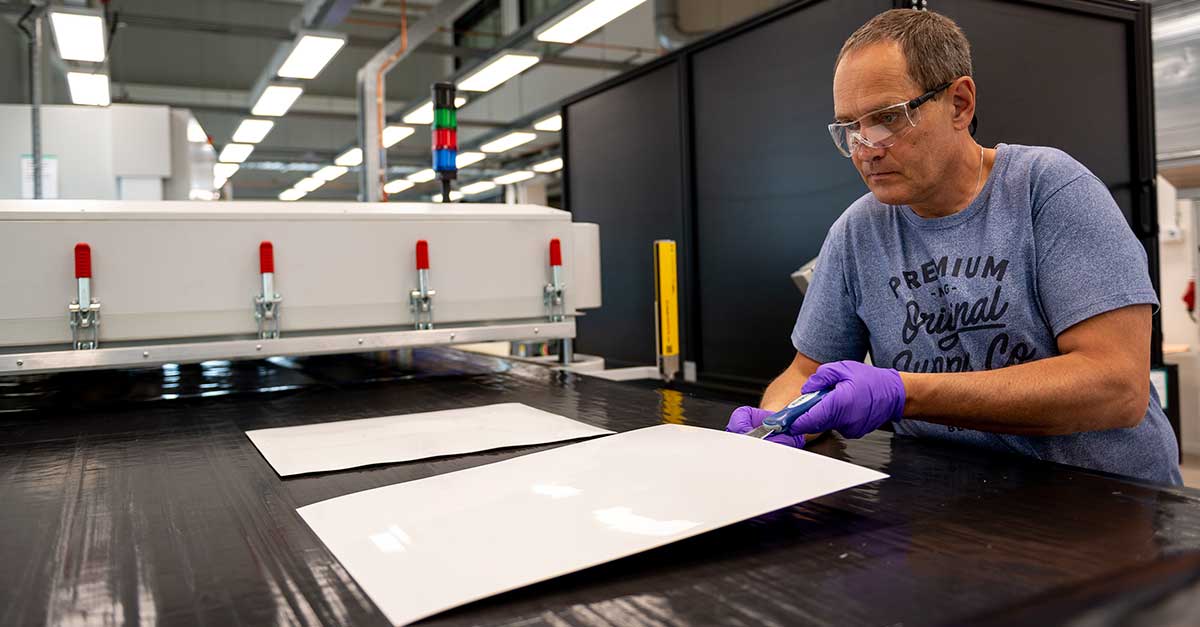From pv magazine International
Researchers from the Netherlands Organization for Applied Scientific Research (TNO) are developing a full-size, recyclable, back-contact solar module which they claim enables Design for Recycling (D4R) without compromising the module life cycle.
The concept of D4R is a design principle that takes into account the recyclability of a product, including end-of-life considerations, at an early life cycle stage. “A D4R approach can exchange the present, rudimentary and detrimental panel shredding technique [with] sophisticated dismantling,” the scientists explained. “Key technology of the D4R approach, is a novel encapsulant with an integrated trigger mechanism for material separation at end of life.”
The encapsulant consists of adhesive foil that can be embedded in the solar cells in a photovoltaic panel. The module is being developed with the support of Dutch backsheet provider Endurans Solar, Netherlands-based brazing and soldering technology provider Mat-Tech, and Dutch module manufacturer Exasun, under the umbrella of the Parsec project.
“It would not necessarily add costs as it can be used in combination with standard factory lamination for the production of PV panels,” TNO researcher Martin Späth, told pv magazine.
Endurance created two different encapsulants for the panel– one for the front of the module. which joins the glass and cells together; and a slightly different formulation for the back of the module, which attaches cells and backsheet together. “The key point is that our encapsulant is a unique adhesive film based on hot-melt technology that enables the individual materials of the module to be separated and retrieved at high purity,” the company explained.
The back-contact technology was chosen for the module, the scientists explained, as it embeds the cell interconnection, as well as most of the bussing and wiring, in a single layer on the panel back side between the encapsulant and the backsheet. In conventional PERC monocrystalline panels, by contrast, cell interconnections are intertwined when connecting front to back side.
The first prototypes will be analyzed in a testing field in Amsterdam. “Ultimately, the new encapsulation must be demonstrated to work seamlessly with the standard lamination process used for all solar modules,” said Endurans, in its own statement. “Once this is achieved, the Parsec-developed recycling technology is well placed to become the industry standard, not only in back-contact technology but for all PV modules.”
*The article was amended on December 10 to reflect that the backsheet provider is Endurans Solar and not DSM, as we previously reported.
This content is protected by copyright and may not be reused. If you want to cooperate with us and would like to reuse some of our content, please contact: editors@pv-magazine.com.









1 comment
By submitting this form you agree to pv magazine using your data for the purposes of publishing your comment.
Your personal data will only be disclosed or otherwise transmitted to third parties for the purposes of spam filtering or if this is necessary for technical maintenance of the website. Any other transfer to third parties will not take place unless this is justified on the basis of applicable data protection regulations or if pv magazine is legally obliged to do so.
You may revoke this consent at any time with effect for the future, in which case your personal data will be deleted immediately. Otherwise, your data will be deleted if pv magazine has processed your request or the purpose of data storage is fulfilled.
Further information on data privacy can be found in our Data Protection Policy.